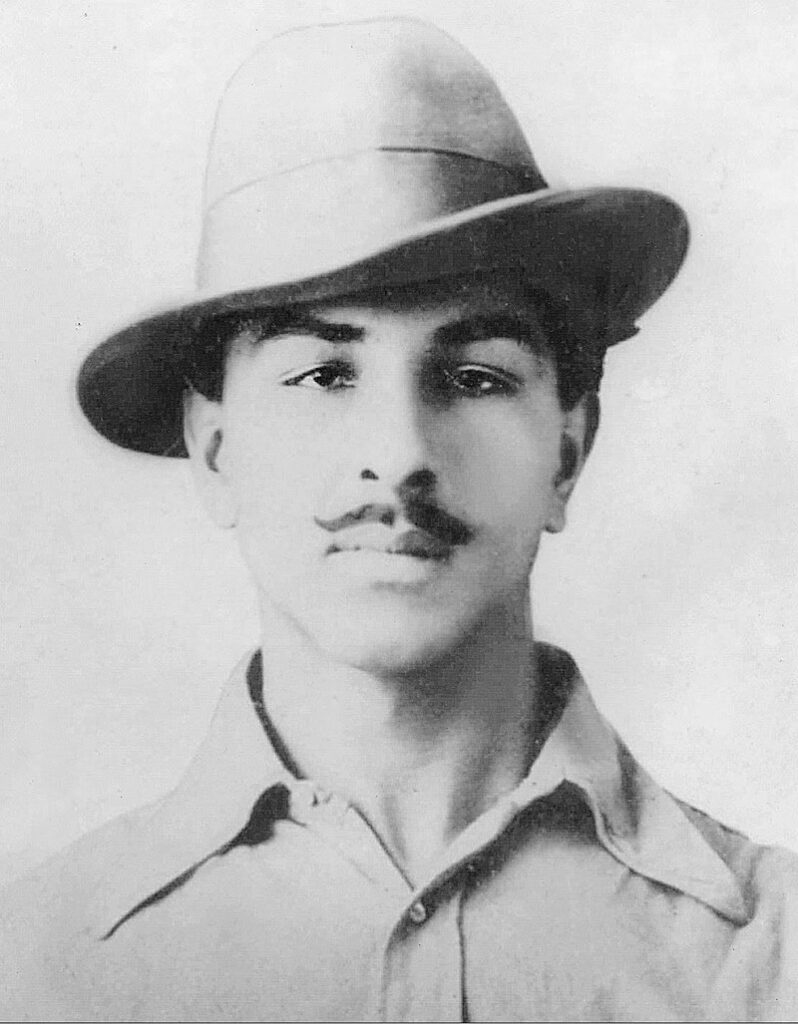Bhagat Singh | Biography, Death, & Facts

Bhagat Singh, a central figure in India’s struggle for independence, was a revolutionary who left an indelible mark on the country’s history. Here’s a summary of his life and contributions:
Early Life and Education:
- Born on September 28, 1907, in the village of Banga in the Lyallpur district of Punjab (now in Pakistan), Bhagat Singh was the second of seven children born to Vidyavati and Kishan Singh Sandhu.
- His family was involved in progressive politics, and Bhagat Singh was influenced by his father and uncle’s activism.
- He received his early education at the village school in Banga and later joined the National College in Lahore, where he became involved in nationalist activities.
Revolutionary Activities:
- Bhagat Singh joined the Hindustan Socialist Republican Association (HSRA), a revolutionary group, and became an active participant in the struggle against British rule.
- In 1928, Bhagat Singh, along with his associates, planned the assassination of James Scott, a British police superintendent, in retaliation for the death of Lala Lajpat Rai.
- However, in a case of mistaken identity, they ended up killing John Saunders, a British police officer. This incident catapulted Bhagat Singh into the limelight as a symbol of resistance against British oppression.
- In 1929, Bhagat Singh and his colleague Batukeshwar Dutt bombed the Central Legislative Assembly in Delhi to protest against oppressive British laws. They courted arrest to use the trial as a platform to highlight their cause.
- Bhagat Singh’s arrest and subsequent trial garnered widespread public support and turned him into a national hero.
Imprisonment and Martyrdom:
- While in prison, Bhagat Singh went on a hunger strike to demand better treatment for political prisoners. His defiance and sacrifice gained him even more admiration from the masses.
- Despite efforts to secure clemency, Bhagat Singh, along with his comrades Sukhdev Thapar and Shivaram Rajguru, was sentenced to death for their involvement in the Saunders murder.
- On March 23, 1931, Bhagat Singh and his fellow revolutionaries were executed by hanging in Lahore Central Jail. Their martyrdom sparked widespread outrage and inspired countless Indians to join the struggle for independence.
Legacy:
- Bhagat Singh’s legacy as a fearless revolutionary and patriot endures to this day. He is celebrated as a symbol of courage, sacrifice, and unwavering commitment to the cause of freedom.
- His ideas and actions continue to inspire generations of Indians in their fight against injustice and oppression.
- Bhagat Singh’s name is synonymous with the spirit of resistance and the quest for a free and egalitarian society in India. He remains one of the most revered figures in the country’s history.


